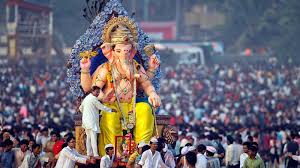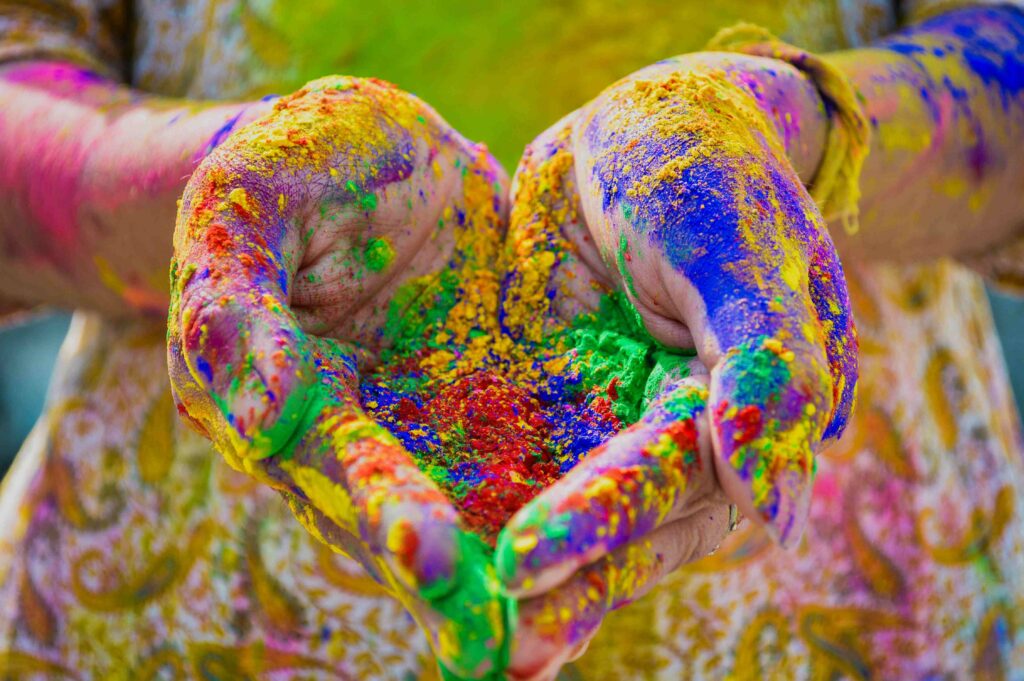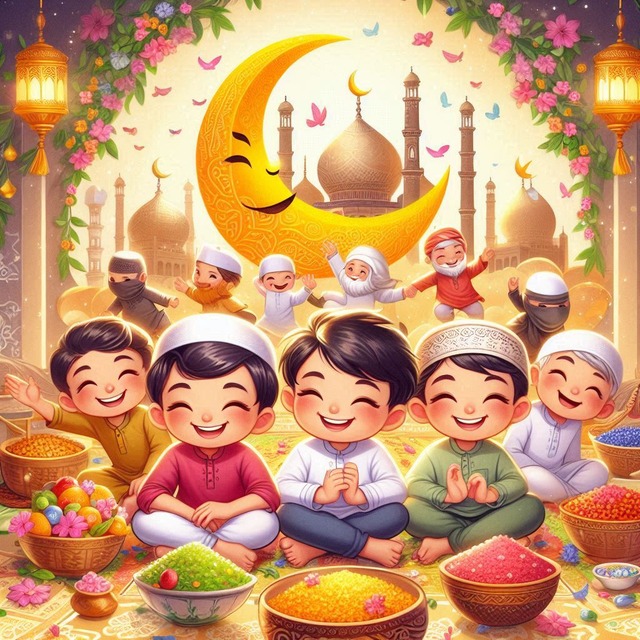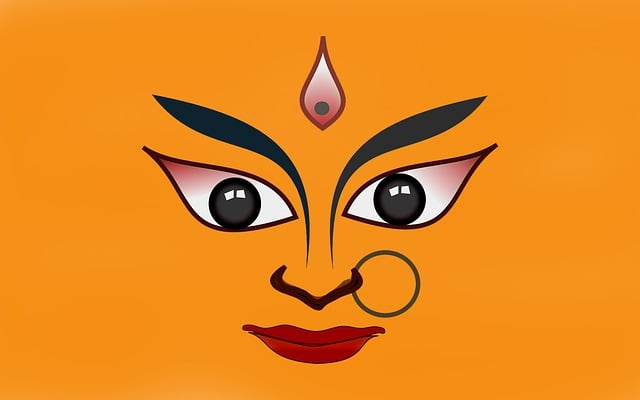Ganesha Chaturthi is a Hindu festival that celebrates the birth of Lord Ganesha, who is known as the god of prosperity and wisdom. The festival lasts for 10 days and starts on the fourth day of the month of Bhadrapada, which is in August or September. According to Hindu stories, Lord Ganesha was created by Goddess Parvati. In one story, Parvati made Ganesha out of turmeric powder that was on her body before she took a bath. She gave life to the statue and told him to guard her while she bathed.
While Parvati was gone, Lord Shiva, her husband, came to visit her. Ganesha did not let him enter because his mother told him not to. Lord Shiva got angry and cut off Ganesha’s head. When Parvati saw what happened, she was very angry and said she would destroy the whole universe. To make her calm down, Lord Shiva said he would bring Ganesha back to life. He sent his followers to find a head for Ganesha and they brought back the head of an elephant. Lord Shiva put the elephant’s head on Ganesha’s body and brought him back to life.
Ganesha Chaturthi is celebrated with a lot of excitement by Hindus all over the world. It is very popular in Maharashtra and some parts of western India. During the festival, people put idols of Ganesha on platforms in their homes or in tents outside that are decorated very nicely. The worship starts with a special ceremony to give life to the idols. Then people do different things to show their respect. At the end of the festival, people carry the idols to rivers in big parades with drums, singing, and dancing. The idols are put into the water, which shows that Ganesha is going back home to Mount Kailas where his parents, Shiva and Parvati, live.
Small story of Ganesha Chaturthi
Here is a short and simple story about Ganesha Chaturthi: A long time ago, when the world was new, people and gods would visit each other. One day, Ganesha was invited to a friend’s house for dinner. It was Ganesha’s birthday and his friend had planned a party to celebrate. Ganesha had heard that his friend’s wife was a great cook. And if there is one thing that Ganesha loves, it is good food. This is just one of many stories that people tell during the festival of Ganesha Chaturthi. This festival celebrates the birth of Lord Ganesha, who is known as the god of prosperity and wisdom. The festival lasts for 10 days and starts on the fourth day of the month of Bhadrapada, which is in August or September. During this time, people come together to celebrate with food, music, and stories about Lord Ganesha.
Maharashtra: In Maharashtra, Ganesha Chaturthi is celebrated with extraordinary eagerness and commitment. The celebration is known as the birthday of Master Ganesha, the child of Ruler Shiva and Goddess Parvati. He is considered the image of shrewdness, success, and great fortune. Amid the celebration, monster Ganesha icons are made and excellent pandals are enhanced to celebrate the celebration that endures for 10 days. On the final day of the celebration, the symbols are taken out in colorful and melodic parades and inundated in water1.
- South India: Agreeing to a story from South India, Master Ganesha was behind the root of the waterway Kaveri. Long back, sage Agastya needed to form a stream to supply water to the arrive within the south. He took the gifts of Ruler Shiva and Brahma and set off with his kamandala filled with sacrosanct water. As he was traveling, he saw a little boy and inquired him to hold his kamandala whereas he calmed himself. The boy was really Master Ganesha in mask, and he put the kamandala on the ground, causing the water to stream out and frame the waterway Kaveri.
Ganesh Chaturthi is a Hindu festival that celebrates the birth of the Hindu god Ganesha, the god of prosperity and wisdom. The festival is celebrated throughout India, including in the northern states of Madhya Pradesh, Gujarat, Rajasthan, and others. The festival begins on the fourth day (chaturthi) of the month of Bhadrapada (August–September), the sixth month of the Hindu calendar. At the start of the festival, idols of Ganesha are placed on raised platforms in homes or in elaborately decorated outdoor tents. The worship begins with a ritual to invoke life in the idols, followed by 16 ways of paying tribute. Amid the chanting of Vedic hymns from religious texts like the Ganesh Upanishad, the idols are anointed with red sandalwood paste and yellow and red flowers. Ganesha is also offered coconut, jaggery, and 21 modaks (sweet dumplings), considered to be Ganesha’s favorite food2. At the conclusion of the festival, the idols are carried to local rivers in huge processions accompanied by drumbeats, devotional singing, and dancing. There they are immersed, a ritual symbolizing Ganesha’s homeward journey to Mount Kailas—the abode of his parents, Shiva and Parvati
Ganesh Chaturthi is a festival that celebrates the birth of the Hindu god Ganesha. It is celebrated all over India, including in the state of Odisha. In Odisha, people celebrate the festival in unique ways. For example, in Cuttack city, Hindu and Muslim students celebrated together. They made two statues of Ganesha: one for a mandapa and one for a temple. The statues were made by students from both communities who live and study together. In Bhubaneswar, people celebrated in a forest park where a tree took the form of Ganesha. In Berhampur, an artist made an idol of Ganesha with 11 different edible grains.
These are just a few examples of how Ganesha Chaturthi is celebrated in different regions of India. The festival is celebrated with great joy and devotion by Hindus all over the world.
Famous dishes on the occasion of Ganesha Chaturthi
- Modak: This is a steamed dumpling made with rice flour, coconut and jaggery. It is considered to be Lord Ganesha’s favorite food and is also known as Modapriya.
- Ladoo: This is a round ball of sweetened flour, ghee, nuts and dried fruits. There are many varieties of ladoo, such as boondi ladoo, rava ladoo, besan ladoo and coconut ladoo. Ladoo is another favorite food of Lord Ganesha and is often seen in his pictures.
- Sheera: This is a semolina pudding cooked with ghee, sugar, dry fruits and cardamom. It is similar to sooji ka halwa and is often offered as bhog to Lord Ganesha.
- Basundi: This is a thickened milk dessert flavored with saffron, cardamom, nuts and rose water. It is similar to rabri and is usually served with poori.
- puran Poli: This is a sweet flatbread stuffed with a mixture of cooked lentils and jaggery. It is a popular dish in Maharashtra and Gujarat and is often made during Ganesh Chaturthi.
Here are some tips on how to prepare your home for Ganpati:
- Clean your house and take a bath before bringing home the idol of Lord Ganesha. This will show your respect and devotion to him.
- Choose a suitable place to keep the idol, preferably in the west, north or northeast direction of your house.
- Decorate the place where you will keep the idol with flowers, drapes, lights, hangings and other items. You can use eco-friendly materials such as cardboard, paper, wood and plants to avoid harming the environment.
- Place a Kalash (a pot filled with water) with a coconut on top and betel leaves around it near the idol. This symbolizes prosperity and abundance.
- Offer food, water, or prasad (sacred offering) to the Ganpati idol first before consuming it yourself. Some of the common offerings are modak (a sweet dumpling), ladoo (a round ball of sweetened flour), sheera (a semolina pudding), basundi (a thickened milk dessert) and puran poli (a sweet flatbread).
- Perform the puja (worship) rituals with your family and friends. You can chant mantras, sing bhajans (devotional songs), do aarti (a ritual of waving lamps) and apply tilak (a mark on the forehead) to the idol.
- Keep the idol at your home for 1.5 days, 3 days, 7 days or 10 days according to your preference. On the last day, immerse the idol in water with a farewell ceremony.
Ganesh Chaturthi is a festival that celebrates the birth of Lord Ganesha, the elephant-headed god of wisdom and success. The festival lasts for 10 days, during which devotees worship Ganesha idols at home or in public pandals. On the last day, the idols are immersed in water bodies, such as rivers, lakes, or oceans. This ritual is known as visarjan, which means immersion or departure. Visarjan symbolizes the return of Ganesha to his heavenly abode after blessing his devotees on earth.
The process of visarjan of Ganesh Chaturthi can be summarized as follows:
- Step 1: Getting the Ganesh idol. You can either buy a ready-made idol from a shop or make your own using eco-friendly materials, such as clay, paper, or natural colors. The idol should be small and easy to carry. You can also decorate the idol with flowers, jewelry, or clothes.
- Step 2: Establishing an altar for Ganesh. You should place the idol on a raised platform or a pedestal in your home or in a public pandal. You should also arrange some items for the puja, such as a lamp, incense sticks, coconut, modak (a sweet dumpling), red flowers, durva (a type of grass), and a kalash (a pot filled with water and mango leaves).
- Step 3: Performing the puja and aarti. You should invoke Ganesha by chanting some mantras and offering him the items mentioned above. You should also perform aarti, which is a ceremonial offering of light using a lamp or a candle. You should sing some devotional songs or hymns in praise of Ganesha and seek his blessings for your wishes and endeavors.
- Step 4: Taking the idol for visarjan. On the last day of the festival, you should take the idol from your home or pandal to a nearby water body. You should carry the idol with respect and devotion, accompanied by your family and friends. You can also join a procession of other devotees who are taking their idols for visarjan. You should play some music and dance along the way to express your joy and gratitude to Ganesha.
- Step 5: Immersing the idol in water. Once you reach the water body, you should gently lower the idol into the water and immerse it completely. You should also immerse the kalash and other items that you used for the puja. You should then fold your hands and bow your head to Ganesha and thank him for his presence and blessings. You should also pray that he returns next year with more happiness and prosperity.




